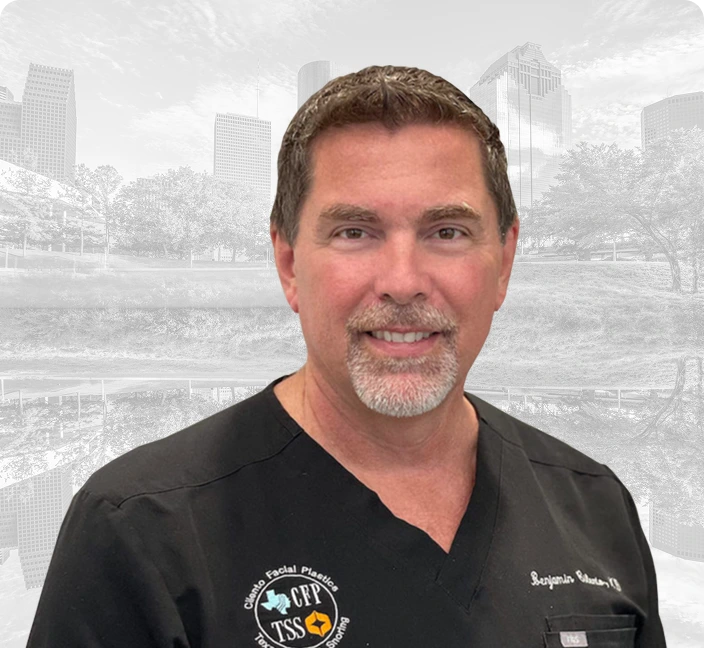What Is Balloon Septoplasty?
Balloon septoplasty is a medical procedure that helps people who suffer from breathing difficulties because of a deviated septum (a thin wall of bone and cartilage between the nostrils). During the procedure, a small balloon is put into the nostril and then inflated gently. This helps to straighten the septum and make it easier to breathe through the nose. After the balloon is deflated and removed, the procedure is repeated on the other side if necessary. The whole process usually takes around 30 minutes to complete, and the patient can go home the same day.
What Happens During a Procedure?
Preparation and Numbing
First, the patient lies down with their head tilted back so the doctor can access the nasal passages. The doctor uses local anesthesia, sometimes combined with IV sedation, to make the process comfortable.
Balloon Insertion and Inflation
After numbing, the doctor puts a tiny balloon into the nostril and guides it to the septum. The balloon is inflated to widen the nasal passages and straighten the septum. The doctor watches the balloon pressure to avoid any damage.
Balloon Removal
After fixing the septum, the balloon is removed, and the procedure may be done on the other side of the nose if needed. Thus, the doctor corrects structural issues, restores the airflow in the two nostrils, and provides significant relief.
Brief Observation and Aftercare Instructions
After the surgery, the patient is kept under observation for any issues before going home. They will get instructions for nose care, like avoiding heavy activities and using saline nose drops to keep the nose moist.
The Benefits of Balloon Septoplasty
Fixes a Deviated Septum
Balloon septoplasty is a simple way to fix a deviated nasal septum. Gently opening the nasal passages can significantly improve airflow, reduce nasal obstruction, and provide relief. This procedure is especially helpful for people who have difficulty breathing due to a crooked septum, as it provides lasting relief without the need for extensive surgery. Balloon septoplasty is generally indicated for certain septal deviations and may not be suitable for all cases, especially severe deviations with significant cartilage or bone displacement.
Minimally Invasive Technique
Balloon septoplasty is minimally invasive, meaning no cuts or scars, and has a quick recovery time. Patients can go home on the same day and get back to normal activities in a few days.
Doesn't Require an Operating Room
One of the most significant advantages of balloon septoplasty is that it doesn’t require an operating room. The procedure can be done right in the office, helping patients avoid hospitals, operating rooms, and other stressful environments often associated with traditional surgery.
Other Benefits
This procedure can lessen snoring, improve sleep, and lower the risk of recurrent sinus infections. It also reduces the need for medications like decongestants, nasal sprays, and allergy medicines. Balloon septoplasty has fewer complications, like infections or bleeding, compared to traditional surgery.
How to Prepare For a Session
To ensure a successful and productive balloon septoplasty session, follow these tips:
Consultation
First, consult with your doctor to discuss the procedure of balloon septoplasty and any specific instructions, and inform them of any medications or supplements you are taking. Schedule the procedure at a convenient time, considering that you may need a day or two off from work for recovery. Arrange for a ride home after treatment to ensure maximum comfort.
Pre-Procedure Instructions
Follow your doctor’s pre-procedure instructions carefully, avoiding certain medications. Prepare your home for recovery by setting up a comfortable area with extra pillows, blankets, and a humidifier to maintain moist air. Stay well-hydrated before the procedure by drinking plenty of water and avoiding alcohol and caffeine. Finally, ask your doctor about what to expect during recovery, including post-procedure instructions or medications, to help you feel more prepared and confident about the process.
What Happens After a Session?
After a deviated septum balloon septoplasty, it’s crucial to follow specific steps to ensure a smooth recovery and return to normal activities. Initially, you’ll remain at the doctor’s office for a short time, where medical personnel will monitor you and provide medication to manage discomfort. Adhering to your doctor’s post-procedure instructions, including taking medication and avoiding certain activities, will contribute to a successful recovery.
It’s essential to rest adequately, as you may experience swelling, mild facial pain, or discomfort for several days after the balloon septoplasty. Attending scheduled follow-up appointments allows your doctor to see your progress and address any concerns. Ultimately, your doctor will advise when it’s safe to return to normal day-to-day activities. Following these steps will ensure a smooth and successful recovery process.
How Long Does It Take to Recover
Recovery times can vary, but generally, patients can expect to experience some swelling, pain, and discomfort for the first few days after the procedure. It’s important to follow post-procedure instructions, rest and recover, attend follow-up appointments, and avoid strenuous activities during the recovery period. Most people feel fully restored after a few weeks, but the nasal tissues can take several months to heal fully.
After the procedure, rest and avoid heavy activities for a few days to protect your nose. Follow your doctor’s instructions, like taking medicine or using a special nose spray. Have someone drive you home, as you won’t be able to drive. Keep your head elevated with pillows while resting to reduce swelling, and avoid blowing your nose for the first few days. If you feel like sneezing, do so with your mouth open to avoid putting pressure on your nose.
Balloon Septoplasty vs. Other Treatments for Nasal Obstruction
Balloon Sinuplasty
Balloon sinuplasty fixes blocked sinus openings to help relieve sinus symptoms, such as congestion, facial pressure, and headaches. While both procedures use a small balloon to open passageways, balloon sinuplasty targets the sinuses rather than the septum. It’s ideal for patients whose main issue is sinus congestion rather than a deviated septum. Good candidates are those who haven’t improved their condition with medications, such as decongestants, antihistamines, or antibiotics.
Endoscopic Sinus Surgery
Endoscopic sinus surgery is a more traditional approach to treating chronic sinusitis and other sinus issues. Surgeons use a thin scope to remove blockages from the sinus cavity, allowing for better airflow and drainage. While effective, this method can be more invasive. Balloon septoplasty offers many patients a gentler alternative with less pain and faster recovery, especially when the primary concern is a deviated septum rather than widespread sinus disease.
Conclusion
We’ve explored the ins and outs of balloon septoplasty, learning about the procedure, its benefits, and the steps to take before and after treatment. Remember, it’s essential to follow your ENT doctor’s advice and care for yourself during recovery. If you or someone you know is considering balloon septoplasty, check out Texas Sinus & Snoring for more information and professional guidance. Our center offers minimally invasive treatments and surgical procedures to help you correct structural issues in the nose.




